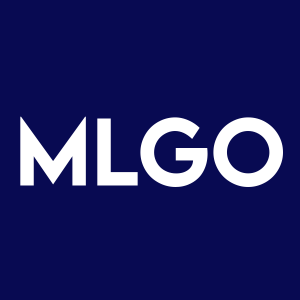MicroAlgo Inc. Announces a Quantum Entanglement-Based Novel Training Algorithm — Entanglement-Assisted Training Algorithm for Supervised Quantum Classifiers
Rhea-AI Summary
- A novel cost function based on Bell inequalities for encoding multiple training sample errors
- Parallel processing capabilities through quantum superposition and entangled qubit relationships
- Enhanced training efficiency and classification performance compared to conventional algorithms
Positive
- Development of innovative quantum entanglement-based training algorithm that could provide competitive advantage
- Technology enables parallel processing of multiple samples, potentially improving training efficiency
- Novel cost function based on Bell inequalities may enhance classification accuracy
- Potential for breakthrough applications in complex classification tasks
Negative
- Implementation faces limitations due to current quantum computing stability issues
- Practical performance constrained by existing qubit numbers and error rates
- Technology still faces significant technical hurdles for practical implementation
- No immediate revenue impact or commercialization timeline mentioned
Insights
MicroAlgo's quantum entanglement algorithm represents theoretical advancement but lacks practical implementation details or timeline for commercial application.
MicroAlgo's announcement describes a quantum entanglement-based training algorithm that theoretically enables simultaneous processing of multiple training samples through quantum states, potentially overcoming limitations of traditional machine learning approaches. The algorithm leverages Bell inequalities as a cost function to encode classification errors from multiple samples simultaneously, which could enhance optimization beyond sample-by-sample methods.
While technically impressive, the press release provides no information about implementation status, hardware requirements, or experimental validation. Current quantum computers have significant limitations in qubit count and coherence times that present substantial barriers to practical deployment. The most advanced quantum computers today operate with 100-400 qubits with high error rates, likely insufficient for the complex entanglement operations described.
The announcement lacks critical details including: comparative performance metrics against classical algorithms, qubit requirements, error tolerance, and importantly, any timeline for commercial applications. No mention is made of partnerships with quantum hardware providers (like IBM, Google, or Rigetti) that would be necessary for implementation.
The theoretical advantage described—parallel processing through quantum entanglement—is well-established in quantum information science, but remains extremely challenging to achieve in practice due to decoherence issues. The Bell inequality-based cost function represents an interesting approach to quantum machine learning, but without experimental results or comparisons to existing methods, its practical advantages remain unproven.
The technology described remains firmly in the research phase with no clear path to commercialization or revenue generation in the near term. Without additional information on development stage, testing results, or commercial partnerships, this announcement appears primarily theoretical rather than representing an imminent product offering.
shenzhen, May 16, 2025 (GLOBE NEWSWIRE) -- Shenzhen, May. 16, 2025––MicroAlgo Inc. (the "Company" or "MicroAlgo") (NASDAQ: MLGO), today announced the development of a novel quantum entanglement-based training algorithm — the Entanglement-Assisted Training Algorithm for Supervised Quantum Classifiers. They also introduced a cost function based on Bell inequalities, enabling the simultaneous encoding of errors from multiple training samples. This breakthrough surpasses the capability limits of traditional algorithms, offering an efficient and widely applicable solution for supervised quantum classifiers.
The core of MicroAlgo's entanglement-assisted training algorithm for supervised quantum classifiers lies in leveraging quantum entanglement to construct a model capable of simultaneously operating on multiple training samples and their corresponding labels. Unlike traditional machine learning methods, quantum classifiers can not only process information from individual samples but also perform parallel processing of multiple samples in quantum states, thereby significantly enhancing training efficiency.
The algorithm represents multiple training samples as qubit vectors using quantum superposition, and encodes their label information into quantum states through quantum gate operations. Due to the entangled relationships between qubits, the classifier can simultaneously operate on multiple samples at once. This characteristic breaks away from the conventional sample-by-sample processing paradigm, greatly improving both training speed and classification performance.
Furthermore, the algorithm introduces a cost function based on Bell inequalities—an important theorem in quantum mechanics that highlights the distinction between quantum entanglement and classical information processing. By encoding classification errors of multiple samples simultaneously into the cost function, the optimization process is no longer limited to individual sample errors but instead considers the collective performance of multiple samples. This approach overcomes the local optimization issues common in traditional algorithms and significantly enhances classification accuracy.
The implementation of MicroAlgo's entanglement-assisted training algorithm for supervised quantum classifiers relies on several core components of current quantum computing technology: qubits, quantum gate operations, and quantum measurement. With these fundamental building blocks, the algorithm can efficiently process input data on a quantum computer.
Representation and Initialization of Qubits: at the initial stage of the algorithm, the input training samples are transformed into qubits. Each training sample corresponds to one or more qubits, which are initialized into specific quantum states. To enable entanglement, entangling operations are performed between multiple qubits so that they can collaboratively process sample data in the subsequent steps.
Construction of Quantum Entanglement: quantum entanglement is one of the core features of quantum computing. In this algorithm, training samples are arranged into an entangled state, meaning that information between samples is shared and processed through entanglement. This not only improves data processing efficiency but also accelerates convergence during the training process.
Application of Bell Inequalities and Cost Function Optimization: a key application of quantum entanglement is in the use of Bell inequalities. In the algorithm, Bell inequalities are employed to construct the cost function, with the objective of minimizing classification errors. Unlike traditional methods, this cost function simultaneously accounts for errors from multiple samples, allowing the optimization process to focus on the collective performance of all samples rather than optimizing on a per-sample basis. Through rapid quantum algorithmic computation, the cost function can be efficiently minimized to achieve optimal classification results.
Interpretation and Output of Classification Results: finally, the algorithm outputs the classification results through quantum measurement. In binary classification tasks, the input training samples are divided into two categories, while in multi-class tasks, they are assigned to multiple classes. The advantage of quantum computing lies in its parallel processing capability, enabling the system to complete complex classification tasks in a significantly shorter amount of time.
The greatest advantage of this technology lies in its ability to leverage the unique properties of quantum entanglement to parallelize the training process across multiple training samples. This not only accelerates the training speed but also effectively enhances classification accuracy. Especially in problems involving large datasets, traditional methods often face computational bottlenecks, whereas quantum computing can easily overcome these limitations.
In addition, the cost function based on Bell's inequality is theoretically more robust than traditional error minimization methods. It can simultaneously handle the errors of multiple training samples, thereby avoiding the local optimum problems that may occur in conventional approaches. This makes the supervised quantum classifier particularly effective in complex classification tasks.
However, quantum computing still faces many challenges. For instance, the stability and computational scale of quantum computers remain limiting factors. The number of qubits and their error rates can both impact the practical performance of the algorithms. Therefore, how to implement efficient algorithms on existing quantum computing platforms remains a technical hurdle that needs further breakthroughs.
With the continuous advancement of quantum computing technology, quantum machine learning is bound to become a key direction for future technological innovation. The entanglement-assisted training algorithm of the MicroAlgo supervised quantum classifier opens up new possibilities in this field. By integrating quantum entanglement with traditional classification algorithms, this technology demonstrates great potential in improving training efficiency and enhancing classification accuracy. Although quantum computing still faces numerous challenges, with ongoing progress in hardware and deepening theoretical research, we have every reason to believe that quantum computing will bring about a revolution in the field of machine learning. In the future, quantum classifiers may not be limited to traditional binary classification tasks—they could potentially exhibit unparalleled advantages in even more complex domains.
About MicroAlgo Inc.
MicroAlgo Inc. (the “MicroAlgo”), a Cayman Islands exempted company, is dedicated to the development and application of bespoke central processing algorithms. MicroAlgo provides comprehensive solutions to customers by integrating central processing algorithms with software or hardware, or both, thereby helping them to increase the number of customers, improve end-user satisfaction, achieve direct cost savings, reduce power consumption, and achieve technical goals. The range of MicroAlgo's services includes algorithm optimization, accelerating computing power without the need for hardware upgrades, lightweight data processing, and data intelligence services. MicroAlgo's ability to efficiently deliver software and hardware optimization to customers through bespoke central processing algorithms serves as a driving force for MicroAlgo's long-term development.
Forward-Looking Statements
This press release contains statements that may constitute "forward-looking statements." Forward-looking statements are subject to numerous conditions, many of which are beyond the control of MicroAlgo, including those set forth in the Risk Factors section of MicroAlgo's periodic reports on Forms 10-K and 8-K filed with the SEC. Copies are available on the SEC's website, www.sec.gov. Words such as "expect," "estimate," "project," "budget," "forecast," "anticipate," "intend," "plan," "may," "will," "could," "should," "believes," "predicts," "potential," "continue," and similar expressions are intended to identify such forward-looking statements. These forward-looking statements include, without limitation, MicroAlgo's expectations with respect to future performance and anticipated financial impacts of the business transaction.
MicroAlgo undertakes no obligation to update these statements for revisions or changes after the date of this release, except as may be required by law.
Contact
MicroAlgo Inc.
Investor Relations
Email: ir@microalgor.com









